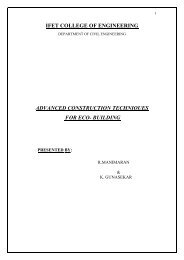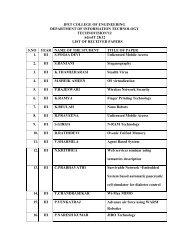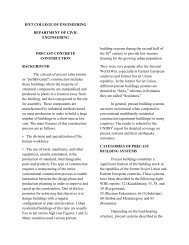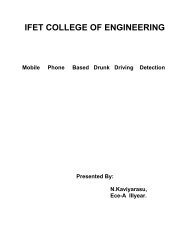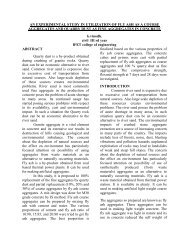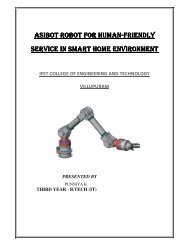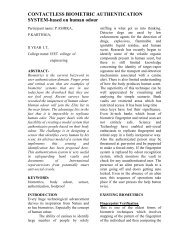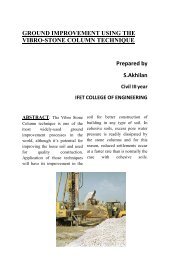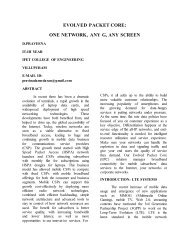valvetronic engine technology - IFET College of Engineering
valvetronic engine technology - IFET College of Engineering
valvetronic engine technology - IFET College of Engineering
- No tags were found...
Create successful ePaper yourself
Turn your PDF publications into a flip-book with our unique Google optimized e-Paper software.
Compact. In turn, the first representative<strong>of</strong> this newly developed family <strong>of</strong><strong>engine</strong>s was a four-cylinder four-valvespark-ignition power unit displacing 1.8litres, developing maximum torque <strong>of</strong>175 Newton meters (Nm) and maximumoutput <strong>of</strong> 85kW (see Figure 4). BMW’snew Valvetronic four-cylinder powerunits come with 1.8-litre and 2.0-litrecapacities.Some Experimental resultsDespite the reduction in <strong>engine</strong>size by 100 cubic centimeters, comparedwith the former generation <strong>of</strong> powerunits, torque is up from 165Nm to175Nm, with output increasing from77kW to 85kW. With displacement <strong>of</strong>the 2.0-litre <strong>engine</strong> being increased by5%, torque was up by no less than 11%from 180Nm to 200Nm, <strong>engine</strong> outputincreasing from 87kW to 105kW,resulting in specific torque <strong>of</strong>100Nm/litre and specific output <strong>of</strong>52.5kW/litre.The driver senses this enhancedperformance through the more powerfultorque curve, the car’s dynamicbehaviour on the road clearly provingthe advantages <strong>of</strong> this extra torque. Morethan 90% <strong>of</strong> the <strong>engine</strong>’s torque comesat just 2,000 revolutions per minute(rpm), with torque peaking at 3,750rpm.Engine output, in turn, remainsconsistently at its near-maximumthroughout a wide speed range.The 4.4-litre power unit developsa maximum output <strong>of</strong> 245kW with a fuelconsumption <strong>of</strong> only 10.9 litres/100km(or 25.9 miles per gallon) and alreadycomplies with the EU4 standard, whichdoes not become obligatory until 2005.The oil service intervals, in turn, havebeen extended up to 40,000km or 25,000miles.One <strong>of</strong> the most importantobjectives from the start was to reducefuel consumption. These <strong>engine</strong>s <strong>of</strong>fer aparticular enhancement <strong>of</strong> fuel economyabove all at low loads. When idling, fuelconsumption is down by approximately25% and the overall improvement in theEuropean fuel consumption test cycle is12%. The customer will also experiencethis improved economy and fuelefficiency in everyday motoring on theroad. Using the power <strong>of</strong> the <strong>engine</strong> infull, on the other hand, the driver doesnot have greater fuel efficiency than witha conventional power unit. The reasonfor this is that, under these conditions,the <strong>engine</strong> runs like a throttle butterfly




